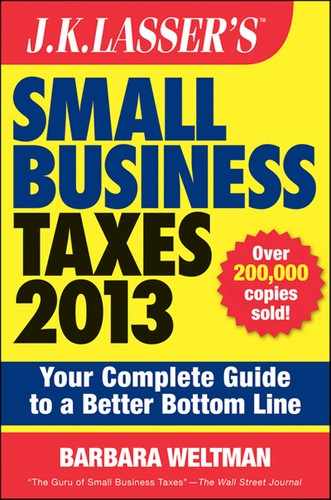If you sell your business by selling all of its assets, the rules for reporting gain or loss are really no different from a single asset sale. You allocate the purchase price of the sale to each of the assets, including goodwill or going concern value, in order to determine your gain or loss. You usually arrive at this allocation through negotiations between you and the buyer.
The sale price is allocated in descending order—first to Class I assets, then Class II assets, and so on. There is no debate on allocating part of the purchase price to assets in the first 2 classes since the value of the assets is not in dispute. But as a seller, you generally want to allocate as much of the remaining purchase price to assets that will produce the most favorable tax results to you. For example, if you can allocate an amount to goodwill, you will achieve capital gain treatment.
In contrast, if such an amount is allocated to inventory, you have ordinary income. However, the buyer has competing interests and wants to allocate as much as possible to depreciable assets. That would give him or her the opportunity to maximize depreciation deductions. Ultimately, the price you receive for the assets will reflect negotiations that include the allocation process.
Corporations that acquire stock in another corporation may, under certain circumstances, elect to treat the stock purchase as an asset sale (see Chapter 5).
Where to Report Gains and Losses on Business Property
For All Taxpayers
Section 1231 gains and losses are reported on Form 4797, Sales of Business Property, regardless of the type of entity. The results from Form 4797 are carried over and reported on the business’s tax return. For individuals, Form 4797 gains and losses are reported directly on Form 1040.
Installment sales are figured on Form 6252, Installment Sale Income. The results are carried over to Form 4797 (or Form 8949 and Schedule D as explained in Chapter 5). Use a separate Form 6252 for each installment sale you transact. Do not complete the form if you elect out of installment reporting—instead simply report your entire gain on Form 4797 (or Form 8949 and Schedule D).
A sale of all the assets of the business is reported on Form 8594, Asset Acquisition Statement. This form is used to allocate the purchase price to specific assets.
Self-Employed
Gains and losses on Section 1231 property are reported on Form 4797. The results are carried over to page 1 of Form 1040. Do not enter the results on Schedule C (or on Schedule F in the case of farming operations).
If you elect to postpone gain on a casualty, theft, or condemnation, make your election on the return for the year in which you realized gain. If you acquired replacement property before filing your return, attach a statement to the return showing the amount realized, how you computed your gain, and any gain reported. If you have not yet acquired replacement property by the time you must file your return, simply attach a statement to your return showing the circumstances of the casualty, theft, or condemnation giving rise to the gain, how you calculated your gain, and that you intend to acquire replacement property within the replacement period. Then, when you do buy replacement property, attach another statement to the return for the year of the replacement purchase explaining the replacement.
If the replacement period expires before you acquire replacement property (and you do not obtain an extension for the replacement period), you must file an amended return for the year in which you realized gain. You report your full gain on this amended return. You must also file an amended return if you buy replacement property and the cost is not sufficient to postpone the reporting of all of your gain. You report the portion of the gain not covered by the replacement property on this amended return.
Once you have designated certain property as your replacement property, you cannot later substitute other property for it. However, if your replacement property is found to be unsuitable, you can then substitute other qualified property, provided the replacement period has not expired.
Partnerships and LLCs
Section 1231 gains and losses are calculated on Form 4797 and then entered on Schedule K and allocated to partners on Schedule K-1.
If there is a gain as a result of a casualty or theft to business property, the partnership or LLC must elect to defer the recognition of gain and buy the replacement property. The individual partners or LLC members cannot make a separate election. Each partner or LLC member reports his or her distributive share of business income or loss on his or her personal income tax return.
S Corporations
Section 1231 gains and losses are computed on Form 4797 and then entered on Schedule K and allocated to shareholders on Schedule K-1.
If there is a gain as a result of a casualty or theft to business property, the S corporation must elect to defer the recognition of gain and buy the replacement property. The individual shareholders cannot make a separate election. Each shareholder reports his or her distributive share of S corporation income or loss on his or her personal income tax return.
C Corporations
Section 1231 gains and losses are computed on Form 4797 and then entered on Form 1120. Both capital losses and Section 1231 losses are part of the corporation’s taxable income.
If the corporation discovers that it suffered a loss from worthless securities in a prior year and wants to file an amended return, use Form 1120X, Amended U.S. Corporation Income Tax Return.
